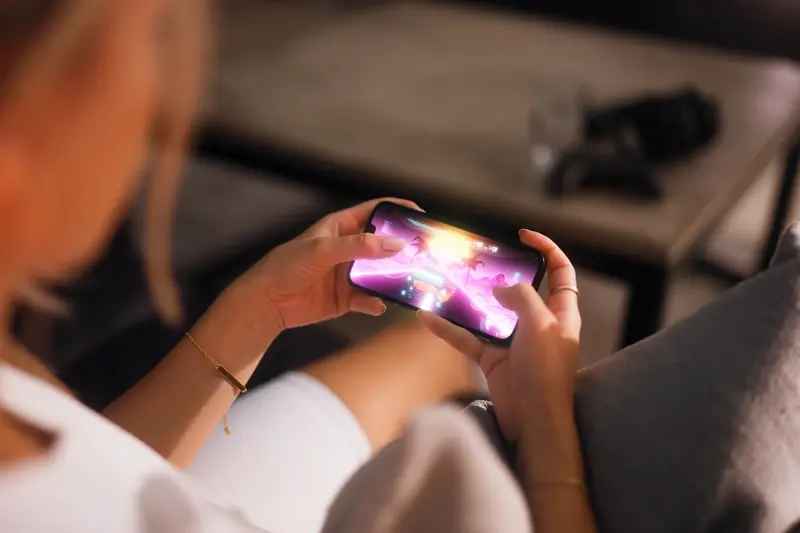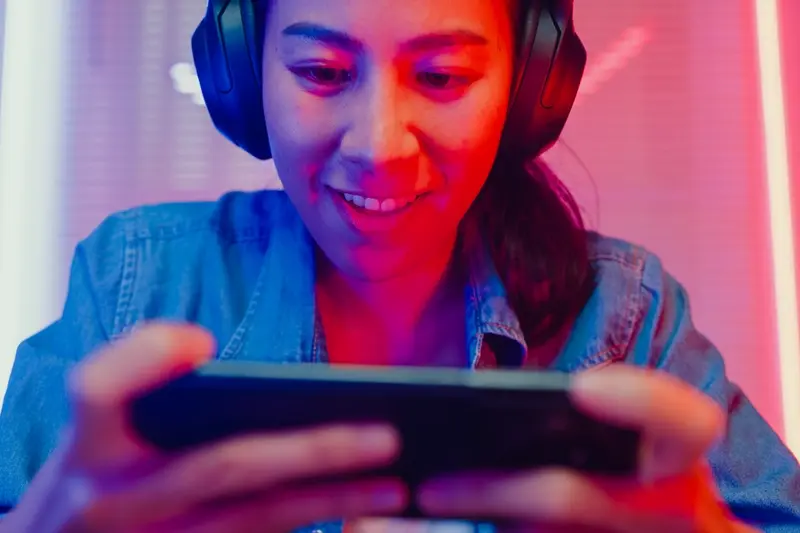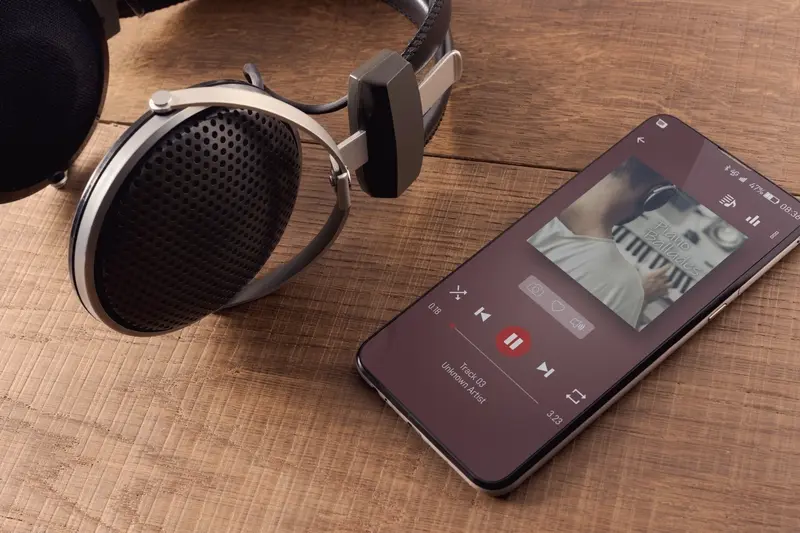Should My Entertainment App Focus On Music
Have you ever found yourself staring at your phone, scrolling through endless entertainment options, wondering why some apps grab your attention whilst others get deleted after five minutes? After spending over eight years designing and developing mobile apps, I can tell you that the apps which succeed aren't just the ones with the best features—they're the ones that know exactly what they want to be. And right now, if you're planning an entertainment app, you're facing one of the biggest decisions in the audio content space: should you focus on music, podcasts, or try to do both?
This question keeps many app developers up at night, and for good reason. Music apps and podcast platforms serve different audiences in different ways; they have unique technical requirements, distinct user behaviours, and completely separate content strategies. Getting this choice wrong doesn't just mean a few disappointed users—it can mean the difference between building stellar apps or watching your app disappear into the overcrowded app stores.
The most successful entertainment apps aren't the ones that try to be everything to everyone, but the ones that become indispensable to their specific audience
Throughout this guide, we'll explore the real considerations behind building an entertainment app in the audio space. We'll look at the music-first approach, dive deep into podcast-focused strategies, and examine what it actually takes to create a platform that handles both content types successfully. By the end, you'll have a clear understanding of which path makes sense for your specific vision, audience, and resources.
Understanding Your Entertainment App's Core Purpose
I've worked with dozens of entertainment app projects over the years, and there's one question that stops founders dead in their tracks every single time: what's your app actually for? Sounds simple, doesn't it? But you'd be amazed how many people can't give me a straight answer. They'll say something vague like "it's for entertainment" or "people will love it"—but that tells me nothing about what problem they're solving.
Entertainment apps aren't just about keeping people busy. They need to fill a specific gap in someone's day. Are you helping commuters pass time on the tube? Are you giving fitness enthusiasts something to listen to during workouts? Are you creating background ambience for people working from home? Each of these scenarios demands a completely different approach to content, features, and design.
Music or Podcasts? The Content Decision
This is where things get interesting—and where most people get stuck. Music apps excel at creating mood and atmosphere; they're brilliant for activities where you want background sound without distraction. Podcasts, on the other hand, demand active listening and engagement. They're perfect for learning or entertainment during focused activities like cooking or commuting.
The truth is, your target audience and their specific use cases should dictate your content strategy, not the other way around. Get this right, and everything else becomes much clearer.
The Music-First Approach: Building Around Sound
When I'm working with clients who want to build a music-focused entertainment app, I always tell them the same thing: music isn't just content, it's an experience. People don't just listen to music—they feel it, they connect with it, and most importantly, they expect it to work perfectly every single time. There's nothing worse than a song cutting out halfway through your favourite chorus!
Building your entertainment app around music means putting audio quality and seamless playback at the heart of everything you do. Your users will judge your entire app based on how well it handles their music collection. Skip once too often and they're gone to Spotify faster than you can say "buffering".
What Makes Music Apps Different
Music apps have unique requirements that you simply don't get with other types of content. Your app needs to work when the phone is locked, when users switch between apps, and when they're on dodgy mobile connections. These technical demands shape every design decision you make.
- Background playback that never fails
- Instant response to play, pause, and skip commands
- Smart caching for offline listening
- Integration with car systems and headphones
- Social sharing features for favourite tracks
Start with your audio engine first, then build your interface around it. Too many developers do this backwards and end up with apps that look great but sound terrible.
The beauty of the music-first approach is that once you've nailed the core audio experience, everything else becomes an opportunity to enhance that musical journey rather than compete with it.
The Podcast-Focused Strategy: Conversations and Stories
When I first started seeing clients pivot their entertainment apps away from music towards podcasts, I thought it was just a passing trend. Boy, was I wrong! Podcasts have become a massive part of how people consume content—they're intimate, convenient, and people absolutely love the storytelling aspect.
Building a podcast-focused entertainment app is quite different from creating one centred around music. Your users aren't looking for background noise; they want engaging conversations, gripping stories, or educational content they can really sink their teeth into. This means your app needs to handle longer content sessions—we're talking 30 minutes to several hours rather than 3-minute songs.
Understanding Podcast User Behaviour
Podcast listeners are creatures of habit. They subscribe to shows, follow series, and often listen in specific contexts like commuting or exercising. Your app needs to accommodate this behaviour with robust subscription management, episode tracking, and seamless playback that remembers exactly where users left off—even if they switch devices mid-episode.
Content Discovery and Curation
Unlike music where people might discover new tracks through playlists, podcast discovery works differently. Users often find new shows through recommendations, trending topics, or by exploring specific categories like true crime or business. Your search and recommendation engine needs to understand this—matching users with shows based on their interests rather than just listening history.
Creating a Dual-Content Entertainment Platform
So you've decided you want both music and podcasts in your entertainment app. Fair enough—plenty of successful platforms do exactly this. But here's the thing: doing both well is significantly harder than picking one and nailing it.
The biggest challenge isn't technical (though we'll cover that later). It's about user expectations and content strategy. Music listeners often want quick access, playlists, and discovery features. Podcast listeners want subscriptions, episode management, and the ability to pick up where they left off. These are fundamentally different behaviours.
Finding Your Primary Focus
Even if you're building a dual-content platform, you need to decide which content type leads. Spotify started with music and added podcasts later—they didn't try to be everything from day one. This approach lets you build a solid foundation with one content type before expanding.
The most successful dual-content platforms still have a clear primary identity that users understand immediately
Content Discovery Across Formats
Your biggest opportunity lies in cross-format recommendations. Users who listen to indie rock might enjoy music interview podcasts; true crime podcast fans might like dark ambient music. This kind of intelligent content bridging is where dual platforms can really shine—but it requires sophisticated algorithms and lots of user data to get right.
Technical Considerations for Audio Content Delivery
Building an entertainment app that handles audio isn't just about making things sound good—though that's obviously important! The technical side can make or break your user's experience, and I've seen plenty of apps fail because they didn't get the basics right.
Audio Quality and File Management
Your app needs to handle different audio formats smoothly. MP3 files work well for most music content, but podcasts might benefit from formats that compress speech better. The tricky bit is balancing file size with quality; nobody wants to wait ages for a song to load, but they also don't want it to sound like it's coming through a tin can.
Storage becomes a real challenge when you're dealing with audio files—they're much bigger than text or images. You'll need smart caching strategies that download content when users have good wifi connections and clean up old files automatically.
Streaming and Offline Playback
Modern users expect their audio to work everywhere, including on the tube or in areas with patchy signal. This means building robust offline capabilities whilst managing device storage carefully. Your streaming technology needs to adapt to connection speeds; buffering that works on fast wifi might struggle on 3G networks. Background playback is another must-have feature—people want their music or podcasts to continue playing when they switch apps or lock their phone.
User Experience Design for Different Audio Formats
I've noticed something interesting when testing entertainment apps—people interact with music and podcasts in completely different ways. Music listeners tend to skip tracks quickly, browse by mood, and want instant gratification. Podcast listeners? They're the complete opposite. They want to bookmark specific moments, adjust playback speeds, and pick up exactly where they left off days later.
This creates a real challenge for your entertainment app design. You can't just slap the same interface on both formats and hope for the best—trust me, I've seen that approach fail spectacularly! The key is understanding that these audio formats serve different purposes in people's lives.
Music Interface Priorities
For music, your interface needs to be lightning fast. People want to see album artwork prominently, shuffle through playlists effortlessly, and discover new tracks without thinking too hard about it. Visual elements matter more here because music is often a background activity.
Podcast Interface Needs
Podcasts require more functional controls. Your users need chapter markers, variable speed controls, and robust search capabilities. They're actively engaging with content, not passively consuming it like music.
- Music: Large artwork, simple controls, quick browsing
- Podcasts: Chapter navigation, speed controls, bookmarking
- Both: Offline downloads, sleep timers, queue management
Design separate player screens for music and podcasts, but keep your navigation consistent between them. Users shouldn't feel lost when switching between audio formats.
The best approach? Create format-specific experiences that share common navigation patterns. This way users feel comfortable no matter what they're listening to, whilst getting the tools they actually need for each content type.
Conclusion
After working with entertainment apps for the better part of a decade, I can tell you that choosing between music, podcasts, or a dual approach isn't really about following trends—it's about understanding your audience and your resources. Music apps require robust streaming infrastructure, licensing deals, and significant ongoing costs. Podcast platforms need smart recommendation engines and excellent playback features. Dual platforms? Well, they need both.
The biggest mistake I see founders make is trying to be everything to everyone right from the start. Pick one format, nail it completely, then expand. Your users will thank you for creating something that works brilliantly rather than something that does everything poorly. Whether that's a music discovery app that finds perfect playlists or a podcast platform that makes conversations easy to follow, focus wins every time.
Before you write a single line of code or design your first wireframe, go back to that fundamental question: what problem are you solving for your users? If you can answer that clearly and it points to music, build a music app. If it points to podcasts, build that instead. But don't let feature creep convince you that more is always better—because in my experience, it rarely is.
Share this
Subscribe To Our Learning Centre
You May Also Like
These Related Guides

How Do You Make Money From Free Mobile Games?

What Type Of Mobile Game Should You Build First?



